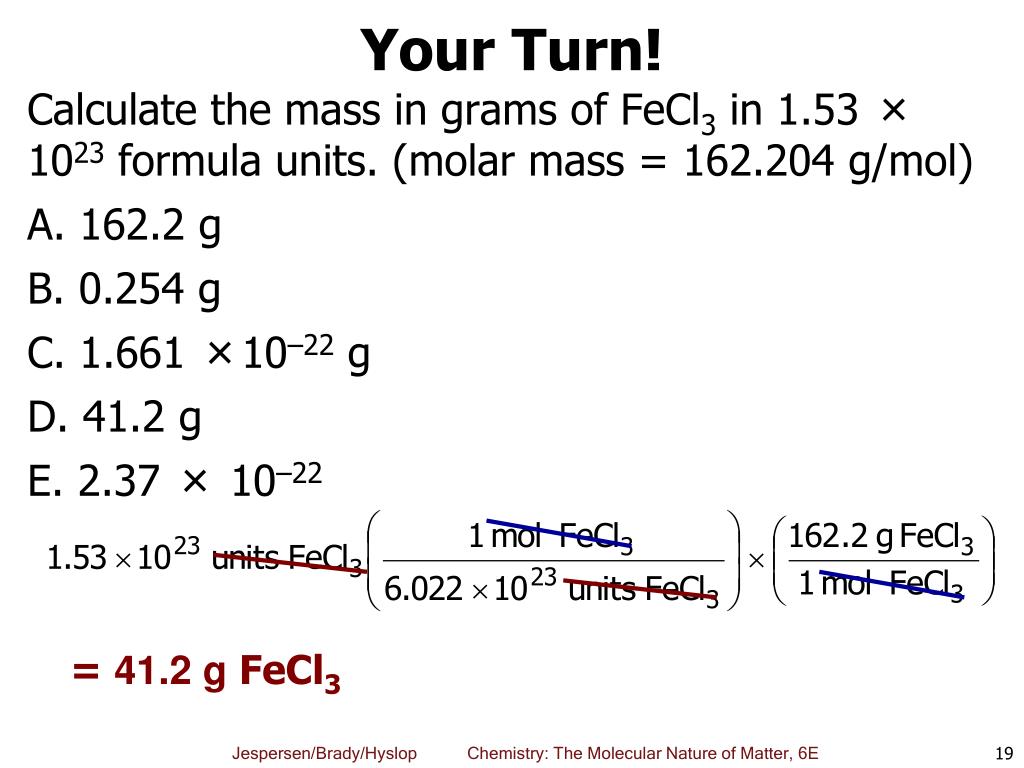

In other words, it is the mass of one mole of a particular substance. The molar mass is a physical property, which is defined as the mass of a substance divided by its amount of substance in moles. One mole of pure carbon-12 has a mass of exactly 12 grams. The mole as the unit of measurement for the amount of substance is one of the seven base units of the International System of Units (SI). In other words, the mole is the amount of substance equal in mass to the combined mass in atomic mass units of the atoms of molecules of the substance multiplied by the Avogadro constant or Avogadro number. An elementary entity may be an atom, a molecule, an ion, an electron, any other particle or specified group of particles.Īvogadro constant N A = 6.02214076×10²³ mol⁻¹ The amount of substance, symbol n, of a system is a measure of the number of specified elementary entities. This number is the fixed numerical value of the Avogadro constant, N A, when expressed in the unit mol⁻¹ and is called the Avogadro number. One mole contains exactly 6.02214076×10²³ elementary entities. The mole, symbol mol, is the SI unit of the amount of substance. The mole is used to express the amounts of reactants and products of chemical reactions. In chemistry, it is important to measure their amounts accurately. Using the chemical formula of the compound and the periodic table of elements, we can add up the atomic weights and calculate molecular weight of the substance.All substances consist of atoms or molecules.

The percentage by weight of any atom or group of atoms in a compound can be computed by dividing the total weight of the atom (or group of atoms) in the formula by the formula weight and multiplying by 100. If the formula used in calculating molar mass is the molecular formula, the formula weight computed is the molecular weight. The formula weight is simply the weight in atomic mass units of all the atoms in a given formula. When calculating molecular weight of a chemical compound, it tells us how many grams are in one mole of that substance. For bulk stoichiometric calculations, we are usually determining molar mass, which may also be called standard atomic weight or average atomic mass.įinding molar mass starts with units of grams per mole (g/mol). This is not the same as molecular mass, which is the mass of a single molecule of well-defined isotopes.
#NA2CO3 MOLAR MASS HOW TO#
This is how to calculate molar mass (average molecular weight), which is based on isotropically weighted averages. The atomic weights used on this site come from NIST, the National Institute of Standards and Technology. This site explains how to find molar mass. The reason is that the molar mass of the substance affects the conversion. To complete this calculation, you have to know what substance you are trying to convert. These relative weights computed from the chemical equation are sometimes called equation weights.Ī common request on this site is to convert grams to moles. In chemistry, the formula weight is a quantity computed by multiplying the atomic weight (in atomic mass units) of each element in a chemical formula by the number of atoms of that element present in the formula, then adding all of these products together.įormula weights are especially useful in determining the relative weights of reagents and products in a chemical reaction.


 0 kommentar(er)
0 kommentar(er)
